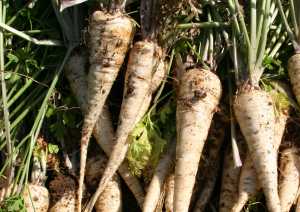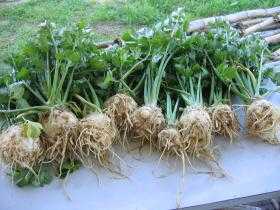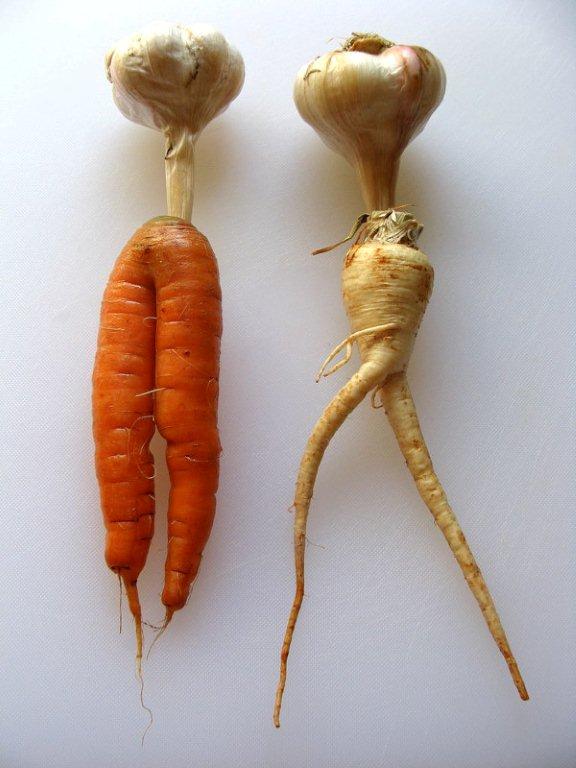The Izza Pziza Dairy reminds those who receive their order with a multipurpose thermal pack to please use the Chubeza delivery boxes to return the ice pack/thermal packs. Thank you!
______________________
The little prince crossed the desert and met with only one flower. It was a flower with three petals, a flower of no account at all. “Good morning,” said the little prince. “Good morning,” said the flower. “Where are the men?” the little prince asked, politely. The flower had once seen a caravan passing “Men?” she echoed. “I think there are six or seven of them in existence. I saw them, several years ago. But one never knows where to find them. The wind blows them away. They have no roots, and that makes their life very difficult.”
– Antoine de Saint-Exupéry, The Little Prince
Over the past few weeks, we have been enjoying ample quantities of rain, interspersed with a generous measure of sunny days. Last week we were rewarded with a fine quota of rain that satiated the field. This week is nice and sunny, but the earth is still thirsty, and we are certainly not ready to bid farewell to winter precipitation. It’s only the middle of winter, with at least two to three months that can still bring blessed showers. But now, as we prepare to plant the spring crops, the sunny days are also quite important to us to dry the soil and allow us to prepare the earth, seed and plant the veggies and herbs that will begin ripening in springtime. Seeds require a gentle, loosened bed, and after preparing the soil for seeding, the repeated hammering showers create big clods of earth and major havoc in our ready-to-seed bed. We consulted with Shirley, our mentor par excellence, who recommended covering the prepared beds to prevent upcoming rains from disheveling them. We then sprang into action and spread out our thrice-used plastic which once covered the growth houses, and then the soil for solar disinfection in summertime. It may not be the clearest plastic by now, but it certainly does the job. We covered approximately 2 acres in plastic, and we’ll keep you abreast of later-breaking developments.
One of the vegetables that signals the middle of winter is the parsley root, which takes some time to reach maturity. Though we seed it in the beginning of autumn, it is only ready for harvest in the middle of winter. This is a vegetable that always brings us great joy when it finally arrives. The parsley root then joins her good friend and distant cousin the celeriac, which we plant and do not seed, thus he arrives sooner.
This week we turn the Newsletter spotlight to these two spectacular roots. Although their growth is concealed, when they finally emerge there’s robust reason to bring out the soup pot and celebrate (and not only with soup)!
Both the parsley and celery roots belong to the umbelliferae family (along with the carrot, coriander, dill, fennel and others). They perform a double duty for your soups: they’re yummy and filling to munch on, plus they add fragrance and flavor. Each of these roots has a green, stalk-like and faster growing “twin brother” growing above earth (leaf celery and parsley greens), which grow faster and assume different roles in the kitchen. This week we’ll go a few inches under and talk about each member of the root duo.
Every plant needs roots and leaves, of course, and each component works in opposite directions. The roots draw up the nutrients from the earth, and the leaves act as conduits to transform sun rays into available energy for the plant. This is why all parsley and celery have leaves and a root, but celeriac and celery leaves, as well as parsley root and parsley leaves (and you can add the beet root and Swiss chard greens or beet greens) are two different types of the celery/parsley/beet plants, and not simply different parts of the same plant.

Every parsley leaf boasts a root, and every parsley root has leaves, but the leaf parsley is satisfied with modest, thin roots and does not develop a thick root, while the parsley root has thicker and rougher leaves. The varieties of leaf parsley and parsley root were developed over the years by farmers in the ongoing process of selecting preferred species and cultivating them. Some farmers kept seeds from year to year from the plants with the biggest leaves, yet the mildest or best taste or highest resistance to extreme temperatures or pests. Other farmers kept the seeds of plants whose roots thickened and lengthened. Thus the segregation of the species was born – differentiating the parsley grown for its leaves from that which we call “root parsley,” a savory delight to add to the soup.
The flavor of parsley root has been described as a combination of celery, carrot, parsley and turnip. In short, something distinctive and indefinable. Best to just go ahead and taste it! Parsley root is somewhat sweet, but also earthy (as are most roots). For those who are familiar with the parsnip (a long and elongated root, confusingly similar in appearance), note that the parsley root is not a parsnip! Though it looks a lot like the parsnip, the parsley root’s flavor is very different and less sweet.
Leaf parsley originated in the European Mediterranean area, but the root was probably cultivated more in northern Europe, perhaps due to the fact that roots can be stored for longer periods during that region’s harsh winters. The earliest mention of the parsley root is in 16th century Germany. Other names for the root attest to their geographic connections: “Dutch Parsley” and “Hamburg Parsley.” Because it was so loved in the cold European countries, it earned the nickname “Petoushka.”
Root parsley only grows in wintertime. Unlike its sister which also thrives in summer – even under the scorching Israeli sun – the root parsley hates heat, and grows in winter’s low temperatures and high humidity. It also needs a lot more time to reach maturity. The roots appearing in your boxes were seeded in autumn and have been growing underground for almost five months now (leaf parsley is ready in two to three months).
The main challenge in growing root parsley is the thinning-out process. This parsley’s elongated roots need space to grow and fatten up, so it’s crucial to thin the bed which was manually seeded and thus grow plants in dense proximity. When we thin them, we remove some of the young sprouts, allowing their siblings some more “growing space.”
This year we decided to thin out the parsley a great deal more in an attempt to grow larger roots than what we’re accustomed to. Instead of the usual space of approximately 1 cm between each plant, we are now leaving a lot fewer plants but making a lot more space for the remaining plants, some 5 cm between each root. We are happy to report that though several weeks remain before we can harvest them, the parsley roots are chubby and far more attractive than those we’ve been harvesting till now.

Both stalk celery and celeriac are domesticated species, meaning that they were cultivated over hundreds of years. Farmers sought celery’s thickened root, selecting from season to season only those varieties which produced the chubbiest, biggest roots, or rather the round roly-poly roots. For these plants, the stems remained short and thin, with a far more pronounced taste than the mild flavor of stalk celery. Often the stems are hollow, like a straw. When you look at a bed of stalk celery alongside one of celeriac, it’s easy to identify them by the different way the leaves grow. The former are erect and long, the latter chubby and spread out.
Celery is a plant which grows slowly. It starts with its teeny, tiny seeds which take their time, three to five weeks, till they sprout. After their diminutive sprouting, they need at least another two months of devoted care in the warm, pampered temperature of the plant nursery. Only after three or more months are they ready to be planted. We receive the young’uns when they’re approximately three months of age and ready to be lifted out of their black plastic cubes and placed in Chubeza’s fertile earth.
Celery loves fertile earth and lots of water. As a plant which originated in the swamps, it likes humidity in the earth and also in storage, which is why it thrives in wintertime in Israel. The Israeli summer is difficult and dry for the crisp celery plant. After three months in the nursery, it needs another three months to reach the prime age at which its leaves and stems can be harvested. The specie which develops a thick root is even more patient, waiting another month under the cozy cover of Mother Earth and refusing to be coaxed out of its warm bed to the cold, raging winter. A simple calculation leads to the conclusion that the lovely celeriac visiting your boxes this week began its growth some six months ago!
And even when their time has come to ripen, the celeriac and parsley root still hold on to the earth with all their might, and are not easily convinced to emerge. When we harvest them, we use a pitchfork to loosen the earth surrounding the parsley roots, or a knife to gently cut the slender roots surrounding the celeriac. Upon removing them from the earth, we attempt to shake them well to release the remaining clumps of earth still caught within. After this initial cleansing, we march them proudly to our vegetable washing tubs where undergo a momentary soak. Even so, when these roots arrive in your boxes, you will most likely still see remains of dirt. Immerse them in water for some 30 minutes to expedite the final cleaning.
Holding these two yummy roots in your palms, you surely feel the urge to race to the kitchen to prepare some soup. But wait! First have a look at the great suggestions in our recipe section for a variety of delectable uses for these unique roots. A must!
And in honor of our search for roots, I remembered this charming picture sent by Daniel from Modi’in. The caption read: “Do Chubeza vegetables have a secret, enchanted life where they dance the night away?”

Wishing you a wonderful, sunny week. Take advantage of these warm, sundrenched days, go out into nature and breathe deeply. Enjoy!
Alon, Bat Ami, Dror, Orin and the entire Chubeza team
________________________________
WHAT’S IN THIS WEEK’S BOXES?
Monday: Kale/Swiss chard/ mizuna/totsoi, lettuce, parsley root/celeriac, fennel/turnips/daikon/cabbage/kohlrabi, cucumbers, tomatoes, beets/carrots, parsley/coriander/dill, green fava beans/snow peas or garden peas, broccoli/ cauliflower, onions.
Large box, in addition: Leeks, Jerusalem artichokes/potatoes, celery.
FRUIT BOXES: Bananas, avocados, clemetinot, oranges, red apples.
Wednesday: Kale/Swiss chard/mizuna, lettuce, parsley root/celeriac, cabbage/kohlrabi/cauliflower, cucumbers, tomatoes, beets/carrots, parsley/coriander/dill, green fava beans/snow peas or garden peas, broccoli, onions.
Large box, in addition: Leeks, Jerusalem artichokes/fennel/daikon, celery.
FRUIT BOXES: Bananas/lemon, avocados, pomelit, oranges, red apples.

